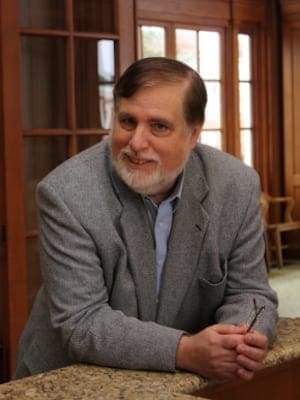The influence of organized evangelicals on Baptists in recent decades has been significant. Take the case of Baylor University since the days of Robert Sloan.
President Sloan, reared a Southern (read “Texas”) Baptist in an era of transition, was theologically formed outside the mainstream Southland and bore all of the marks of a different generation of Southern Baptists. Having survived his own “dark night of the soul” at Princeton Theological Seminary in the ’70s, he sought out British and later European evangelicals who gave him a unique but not quintessentially Baptist orientation.
With Sloan’s eventual strange accession to the Baylor presidency came a new interest at Baylor in American evangelicalism. Visiting lecturers came in droves to Waco, several of whom were offered lucrative, tenured contracts to help in the transition of the largest Baptist university in the world.
Gradually, Sloan transformed Baylor into a “leading evangelical university,” the “Notre Dame of Protestantism.” Within the Waco community, shock and awe characterized Baylor rank and file as the Texas Baptist types reeled over what was happening to cherished ideals like religious liberty and strict separationism, a critical scholarly approach to ideas, and a cooperative Free Church type of Christianity. Some faculty thought they had been invaded by “northern evangelicals,” just like in the Civil War.
In contrast, new regents and new “distinguished” faculty savored the attention in Christianity Today and First Things and the recovery of something called the “great tradition of Christianity.”
That was chapter one: it was titled “Vision 2012,” a controversial long-range strategy to help the university become one of the top schools of its kind in the nation.
The reality was that the Sloan era at Baylor came crashing down. The once-unified faculty of more than 700 became badly divided department by department as Sloan loaded up the faculty with his sympathetic appointments. He especially targeted his own former department of religion by adding university and distinguished professors, who were directly accountable to the senior administration, and diminishing the long-earned distinction of graduate studies in favor of the new George W. Truett Seminary that he personally designed.
The president used the Institute of Faith and Learning to create a shadow evangelical faculty and program to bury Baylor’s recent spiritual mediocrity. The internationally acclaimed J. M. Dawson Institute in Church State Studies was reduced to a department status with appointments that did not share the separationist orientation. Numerous key faculty either retired or left the university.
At the peak of his popularity in the evangelical press, Sloan wearied of his provost and replaced him with a widely acclaimed Canadian evangelical Anglican well connected to Wheaton College, who made a series of indiscreet gaffes while traveling around the countryside. Another leading evangelical appointment refused to move to Waco, and another was embroiled in a holocaust denial investigation.
One of Sloan’s most egregious overreaches into the evangelical sphere of influence was the establishment of the Michael Polanyi Institute that sought to make Baylor the national research center of intelligent design. However, Sloan’s choice of William Dembski to head the institute backfired among the science faculty, and the provost was instructed to quietly dismantle the institute without admitting its failure.
Baylor actually became a national embarrassment to evangelicals at the end of Sloan’s term. The plan to construct numerous new mega-buildings and high-profile programs on the Waco campus was found to be financed by borrowed money, the wholesale commitment to a national Tier I athletics program was fouled by several athletic scandals, and the university airplane, a symbol of the high-flying administration, had to be sold.
It was left to a bold acting president to begin the cleanup by firing Sloan’s provost and reorganizing the administration. Sloan himself was bumped up to being Baylor’s chancellor with a huge payment until he secured the presidency of another Baptist school in Texas.
Chapter two was delayed in coming about because the Baylor regents were conflicted over their next move. After an inconclusive short-term presidency under a distinguished music alum, John Lilly, the evangelical consensus recovered itself and pursued a candidate worthy of their agenda.
Their choice fell upon Kenneth W. Starr, a 64-year-old “judge” with a national reputation who also met certain Baylor criteria. Starr is a native Texan, like all Baylor presidents except George W. Baines. He is a judge like the beloved Judge President Abner McCall. He is a law professor in a university that greatly values its law school. He has been “Prince Valiant” against the evil Bill Clinton political tradition. And, most important of all, he holds unassailable credentials in the American evangelical community.
It is Judge Starr’s religious pilgrimage that needs some closer scrutiny.
William H. Brackney is the Millard R. Cherry Distinguished Professor of Christian Theology and Ethics at Acadia University and Acadia Divinity College in Nova Scotia.
Part Two: Baptizing Ken Starr into Baylor

